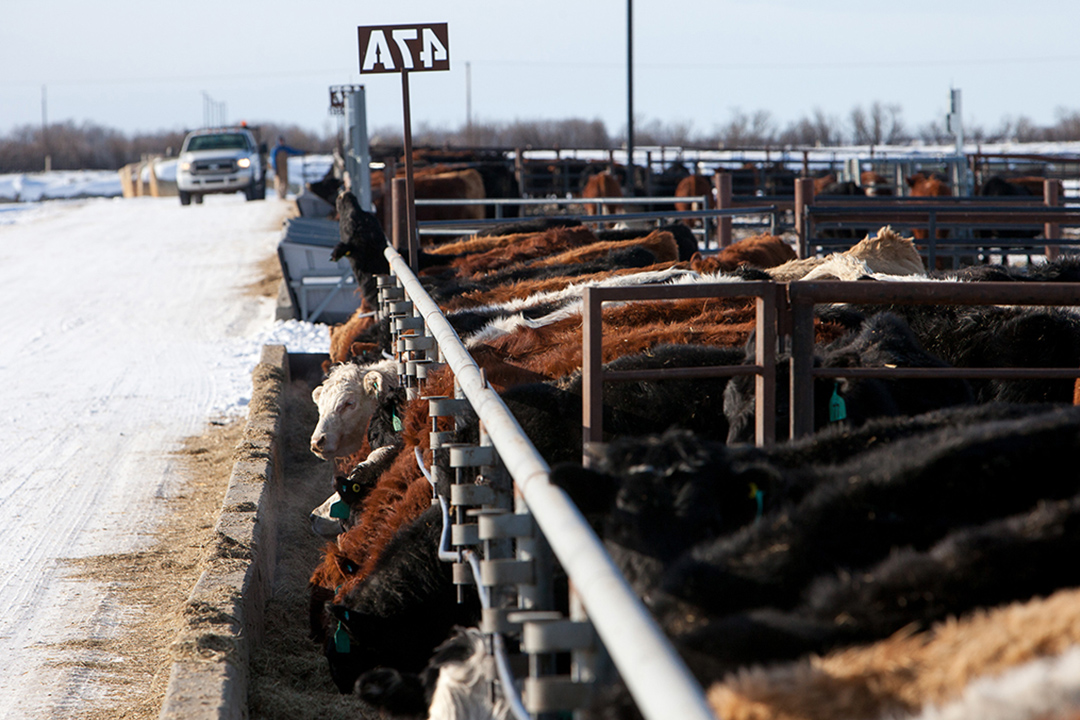
Understanding the genetics behind antimicrobial resistance in beef cattle
Researchers at the Western College of Veterinary Medicine (WCVM) are investigating antimicrobial resistance by establishing relationships between antimicrobial resistance genes in beef cattle and examining the impact of various exposure events on patterns of antimicrobial resistance.
By Elaine Bird
Antimicrobial resistance is a major concern in the cattle industry as the animals develop resistance genes to the various antibiotic drugs, which leads to limited treatment options for livestock producers.
“In Canada and the U.S. both, we are seeing a shift towards more of our bacterial isolates becoming resistant to one or more different classes of antimicrobials over time,” says Dr. Emily Snyder, a beef cattle specialist in the WCVM’s Department of Large Animal Clinical Sciences and the study’s lead researcher.
Snyder and her research team began by sequencing the DNA of microbes involved in bovine respiratory disease (BRD) to determine the specific genes that are causing resistance to certain antimicrobials.
BRD, a common disease seen in feedlot animals, is the costliest disease affecting the beef cattle industry. When calves are shipped from their place of origin to a feedlot, the stressful event increases their chances of obtaining an infection. This risk persists when the calves enter the feedlot and mix with other cattle of differing origins and health statuses.
If producers can’t effectively treat microbes such as the bacteria responsible for BRD, their animals are at risk of serious illness and even death — and that’s a huge animal welfare concern. It’s also an economic issue for producers since unhealthy animals don’t gain the weight they should, resulting in substantial losses to the beef cattle industry each year.
By comparing the DNA sequences from the bacteria causing disease in infected animals, the WCVM scientists hope to determine if there are any direct relationships between their point of origin and/or their exposure to new environments and the resistance genes that they possess during the feeding period.
In this case, the microbes of interest are found in the respiratory tract, which is lined with multiple commensal bacteria (bacteria that don’t harm the host) and can interact with each other. The researchers are studying these bacteria and monitoring their changes over time as they’re exposed to various antimicrobials and other resistance genes.
As these bacteria evolve over time, they obtain different characteristics and will eventually develop different strains — like members of a family that have different identifying characteristics that make them unique.
Snyder’s research will target these different characteristics to determine how exposure to different medications affects the bacteria and the genes within them. As the different strains intermingle, they have the potential to pick up more resistance genes over time — a capacity that leads to the antimicrobial resistance patterns that are this study’s focal point.
With the primary goal of understanding bacterial populations — how they shift with antimicrobial use and how they are related throughout the feeding period of the animals — the research will encapsulate multiple timepoints.
As the researchers explore these bacterial relationships, they aim to identify patterns — particular points at which the animals obtain certain antimicrobial resistance genes.
The data they obtain can then be depicted as a phylogenetic tree. This diagram represents the evolutionary relationships of organisms and provides a visual of the relationships between the different strains of bacteria. In the end, researchers can use this to inform future management decisions surrounding antimicrobial resistance patterns in beef cattle.
As cattle owners strive to implement informed management practices that optimize animal welfare and production outcomes, increasing antimicrobial resistance is becoming more and more problematic.
Increased legislation in Canada that’s aimed at curbing antimicrobial resistance has also limited producer options by stipulating which antimicrobials can and cannot be used.
The researchers are optimistic that their work to identify these resistance patterns can prevent further resistance challenges and help producers to make informed beef cattle management decisions.
The WCVM’s Interprovincial Undergraduate Summer Student Research Program and the Saskatchewan Agriculture Development Fund provided funding for this research project.
Elaine Bird of Lethbridge, Alta., is a third-year veterinary student at the WCVM who worked as a summer research student in 2021. Her story is part of a series of articles written by WCVM summer research students.
This story was first published on April 2, 2023, at https://wcvmtoday.usask.ca/.

